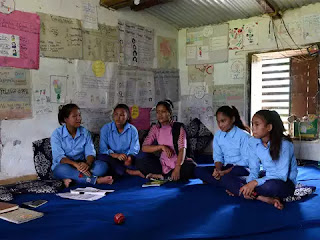Climate & Environment
Researchers needed to drill through nearly 2,000 feet of ice to measure water temperatures where the Thwaites Glacier first connects with the ocean. (Jeremy Harbeck/NASA/OIB)
Jan. 31, 2020 at 3:37 a.m. GMT+5:45
Updated: January 31 2020 1:32 pm
Nepali Time
At a region known as the “grounding line,” where the ice transitions between resting on bedrock and floating on the ocean, scientists measured water temperatures of about 0 degrees Celsius (32 degrees Fahrenheit). That is more than 2 degrees warmer than the freezing point in that location, said David Holland, a New York University glaciologist. He performed the research with Keith Nicholls of the British Antarctic Survey.
“That is really, really bad,” said Holland. “That’s not a sustainable situation for that glacier.”
Scientists already knew that Thwaites was losing massive amounts of ice — more than 600 billion tons over the past several decades, and most recently as much as 50 billion tons per year. And it was widely believed that this was occurring because a layer of relatively warmer ocean water, which circles Antarctica below the colder surface layer, had moved closer to shore and begun to eat away at the glaciers themselves, affecting West Antarctica in particular.
But that had not been directly confirmed because Thwaites is gigantic (larger than the state of Pennsylvania) and exceedingly difficult to reach.
“The biggest thing to say at the moment is, indeed, there is very warm water there, and clearly, it could not have been there forever, or the glacier could not be there,” Holland said.
_______________________________











